23 items found: Search results for "limitations" in all categories x
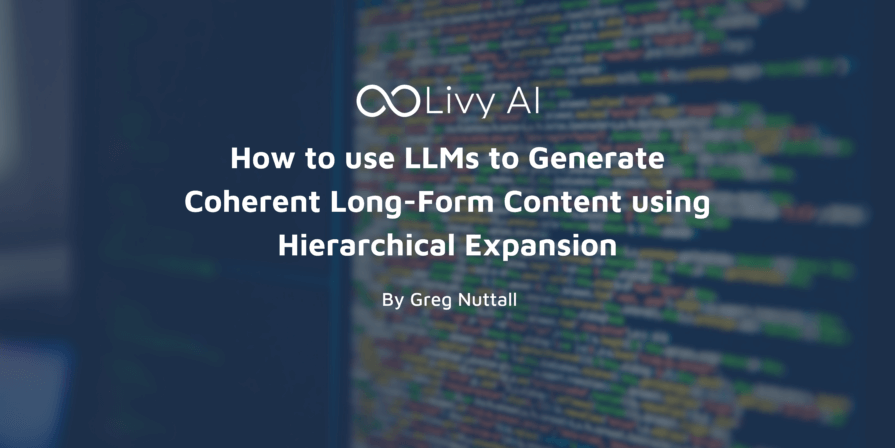
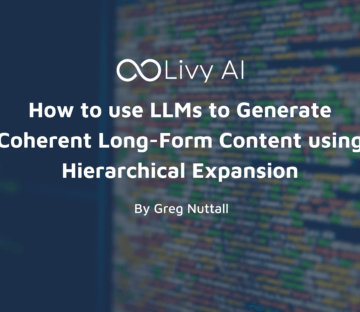
October 30, 2023 | Blog
As impressive as they are, Large Language Models (LLMs) face difficulties when creating long-form content, primarily due to token limitations and inconsistencies in the output over time.
Together with Livy.ai, we developed a “Hierarchical Expansion” method to address these challenges and better the quality, flow, and structure of the content produced. Read further to learn more!


January 31, 2022 | Blog, Data Engineering
There are two camps of Graph database, one side is RDF, where they are strict with their format, and somewhat limited for their extensibility. The other side is LPG, where they can define labels to the relationships. With its recent extension, RDF now allows users to add properties, thus becoming RDF*. In this blog, Ebru explores the structural and performance differences between LPG and RDF*.
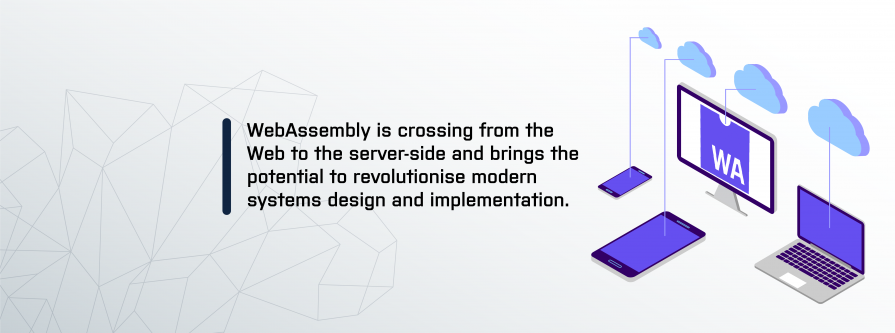
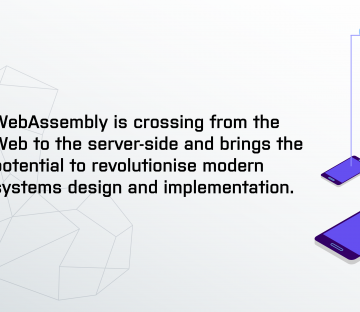
December 11, 2020 | Cloud, Cloud Native, Kubernetes, Microservices
“WebAssembly is a safe, portable, low-level code format designed for efficient execution and compact representation.” – W3C
In this blog, I’ll cover the different applications of Wasm and WASI, some of the projects that are making headway, and the implications for modern architectures and distributed systems.
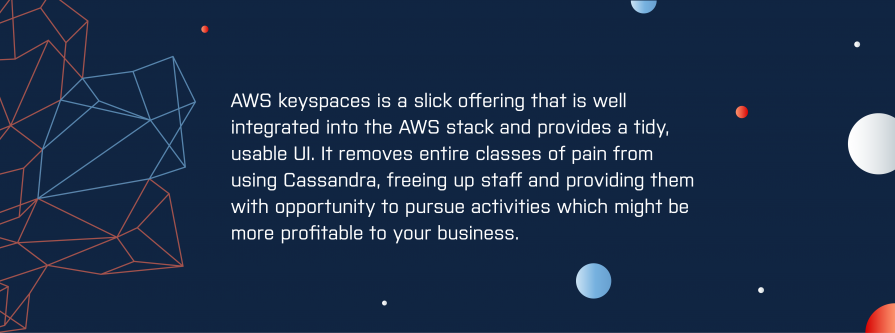

September 22, 2020 | AWS, Blog, Cassandra, Cloud, DevOps, Open Source
With the upcoming Cassandra 4.0 release, there is a lot to look forward to. Most excitingly, and following a refreshing realignment of the Open Source community around Cassandra, the next release promises to focus on fundamentals: stability, repair, observability, performance and scaling.
We must set this against the fact that Cassandra ranks pretty highly in the Stack Overflow most dreaded databases list and the reality that Cassandra is expensive to configure, operate and maintain. Finding people who have the prerequisite skills to do so is challenging.


Join us for Devoxx UK 2018! We are excited to announce that we are sponsoring and speaking at Devoxx UK 2018. Devoxx is a conference by developers, for developers. Conference Tracks include: Cloud, Containers & Infratructure Big Data & AI Architecture Server Side Java Modern Web Programming Languages Security and much more… Multi Env Deploys […]
We’re back with our next event, this time reflecting on recent political events and how Data and Machine Learning can influence it.


August 8, 2017 | Cassandra
Recently, the sad news has emerged that Basho, which developed the Riak distributed database, has gone into receivership. This would appear to present a problem for those who have adopted the commercial version of the Riak database (Riak KV) supported by Basho.
This blog is written exclusively by the OpenCredo team. We do not accept external contributions.


April 13, 2017 | Terraform Provider
Recently I’ve been doing a lot with Terraform; having briefly flirted with it in the past, it’s only now with v0.8.x that I’ve been seriously stepping out with it (and Azure, since you asked). In the main I think it’s great, especially as it means I don’t have to yak-shave with the AWS and Azure CLIs. However, I have started to bang my head against some of Terraform’s limitations, specifically around HCL (Hashicorp Configuration Language) – used to define infrastructure in the Terraform .tf files.


February 28, 2017 | Software Consultancy
As Kotlin’s 1.1 release draws closer, I’ve been looking at some of the new language features it supports. Type aliases may seem like a relatively minor feature next to coroutines, but as I will show in this blog post, they can open up a new programming idiom, particularly when combined with extension functions.


February 16, 2017 | Cassandra
One of the default Cassandra strategies to deal with more sophisticated queries is to create CQL tables that contain the data in a structure that matches the query itself (denormalization). Cassandra 3.0 introduces a new CQL feature, Materialized Views which captures this concept as a first-class construct.


October 10, 2016 | Cassandra
In the culmination of our blog series on the topic, on October 6th 2016 OpenCredo Consultants Dominic Fox, Alla Babkina and Guy Richardson, and hosted by Marco Cullen, presented the common design and implementation issues that they have come across in real-world Apache Cassandra deployments.


August 26, 2016 | Cassandra
At OpenCredo we have been working with Cassandra since 2012 and we are big fans of both open source Apache Cassandra and the capabilities of DataStax Enterprise. Over the years we have collected a great deal of experience throughout the company on how to deliver the benefits of Cassandra in real world projects and have also seen some common pitfalls that businesses have fallen into.


August 26, 2016 | Kubernetes
This post is the first of a series of three tutorial articles introducing a sample, tutorial project, demonstrating how to provision Kubernetes on AWS from scratch, using Terraform and Ansible.


August 24, 2016 | Cassandra
At OpenCredo we are seeing an increase in adoption of Apache Cassandra as a leading NoSQL database for managing large data volumes, but we have also seen many clients experiencing difficulty converting their high expectations into operational Cassandra performance. Here we present a high-level technical overview of the major strengths and limitations of Cassandra that we have observed over the last few years while helping our clients resolve the real-world issues that they have experienced.


June 24, 2016 | Software Consultancy
Akka has been designed with a Java API from the very first version. Though widely adopted, as a Java developer I think Akka has been mainly a Scala thing… until recently. Things are changing and Akka is moving to a proper Java 8 support.


March 14, 2016 | Software Consultancy
Test automation provides fast feedback on regressions. In order to achieve this tests need to execute quickly, something which becomes more of a problem as test suites grow. This is especially true of tests which exercise a user interface where the interaction with the system is slower.
A good way to address this is to have your tests execute in parallel rather than consecutively. Given sufficient resources this allows your execution time to remain low almost indefinitely as more scenarios are added to the suite.


December 1, 2015 | Software Consultancy
This post introduce some of the basic features of Hazelcast, some of its limitations, how to embed it in a Spring Boot application and write integration testings. This post is intended to be the first of a series about Hazelcast and its integration with Spring (Boot). Let’s start from the basics.


November 1, 2015 | Microservices
To use or not to use hypermedia (HATEOAS) in a REST API, to attain the Level 3 of the famous Richardson Maturity Model. This is one of the most discussed subjects about API design.
The many objections make sense (“Why I hate HATEOAS“, “More objections to HATEOAS“…). The goal of having fully dynamic, auto-discovering clients is still unrealistic (…waiting for AI client libraries).
However, there are good examples of successful HATEOAS API. Among them, PayPal.


October 18, 2015 | DevOps, Microservices
Once again I’m privileged to be speaking at the premier Java conference, JavaOne in San Francisco. This year I will be presenting (at least) three conferences sessions: “Building a Microservice Ecosystem”, “Debugging Java Apps in Containers” and “Thinking, Fast and Slow, with Software Development”. I say ‘at least’ three talks as I usually get press-ganged volunteered into helping out at other talks and BoF sessions, but this is simply a sign of the great community spirit and a large group of friends involved with this conference!


February 24, 2014 | Cloud Native, Microservices
Last year some of us attended the London Spring eXchange where we encountered a new and interesting tool that Pivotal was working on: Spring Boot. Since then we had the opportunity to see what it’s capable of in a live project and we were deeply impressed.


January 7, 2014 | Software Consultancy
Cucumber Pro from a technical point of view
The team over at Cucumber Pro recently posted a sneak peek on their blog, demonstrating some key features of their offering.
As more of a technical user of Cucumber, there isn’t much that’s new or ground-breaking for me – almost every feature is already available through your preferred IDE combined with a few plugins.


February 15, 2012 | Cloud
As part of a recent project, I have been working on a number of Scala/Lift applications that we are hosting on a private Cloud Foundry instance.
In this blog post I would like to talk about some practical aspects of developing and deploying Lift applications to Cloud Foundry.
Out of the box, Cloud Foundry is able to run simple Lift applications smoothly. Things however become more interesting if your application needs to talk to one of the available services on Cloud Foundry, such as a relational or a NoSql store.